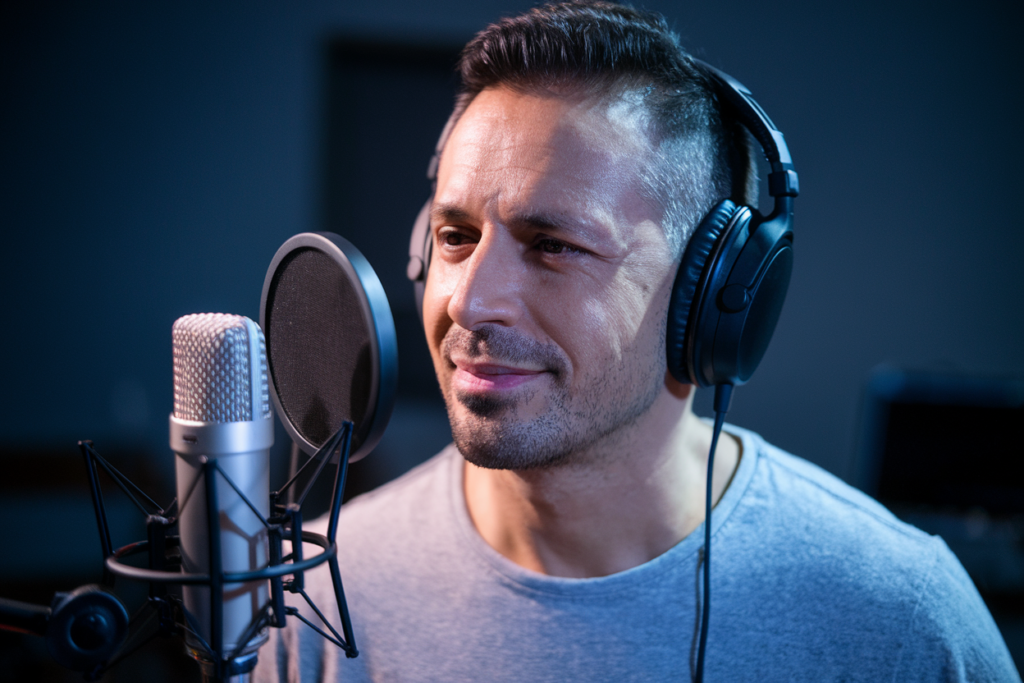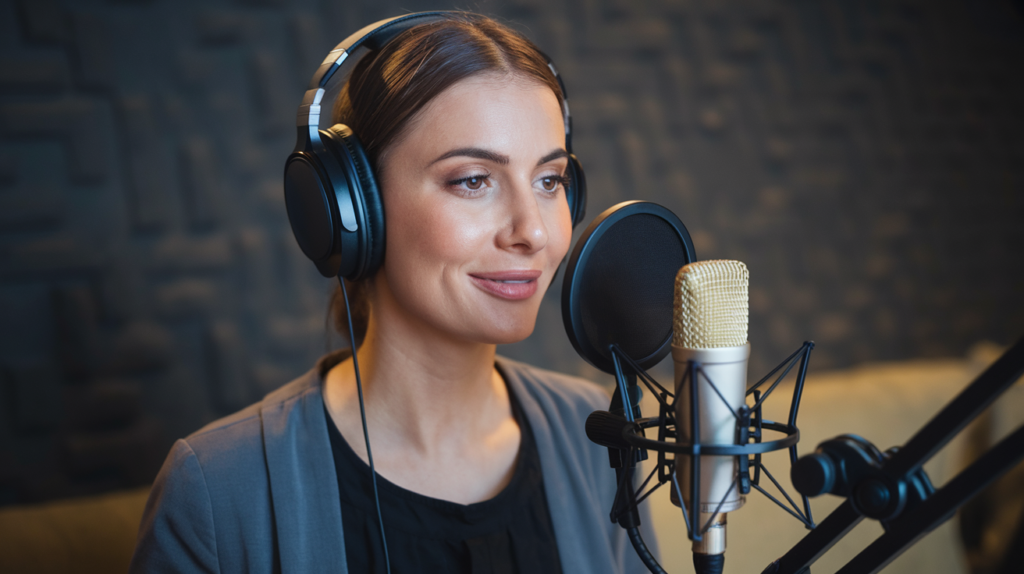Key Takeaways
- Understanding Language Nuances: Turkish voiceover production requires a deep understanding of the language’s phonetics, intonation patterns, and dialect variations to ensure authenticity.
- Cultural Sensitivity is Key: Voice artists must be aware of cultural context and societal norms to avoid misunderstandings and deliver content that resonates with Turkish audiences.
- Technical Quality Matters: Investing in high-quality recording equipment and software is essential for producing clear audio, which enhances listener engagement.
- Collaborate with Native Speakers: Engaging native voice actors can significantly improve the quality of your project by capturing local expressions and humor accurately.
- Continuous Learning: Staying updated on language trends and seeking feedback allows for ongoing improvements in voiceover projects, ensuring relevance and connection with listeners.
Ever wondered what it takes to create a captivating Turkish voiceover? You’re not alone. The world of voiceover production is filled with unique challenges, especially when it comes to capturing the nuances of the Turkish language and culture. From dialect variations to finding the right talent, each step can feel like navigating a maze.
Overview of Turkish Voiceover Production
Turkish voiceover production presents distinct challenges that require careful consideration. Capturing the nuances of the Turkish language involves understanding its unique phonetics and intonation patterns. The subtleties in pronunciation can dramatically influence a project’s effectiveness, making it crucial to choose skilled voice talent who can deliver authentic performances.
Dialect variations add another layer of complexity. Turkey boasts diverse regional accents, each with its own characteristics. Selecting a voice artist familiar with these differences ensures that your message resonates with the intended audience. Understanding cultural context is equally important; a phrase might carry different connotations depending on the region.
Moreover, finding the right voice actor for your project can be daunting. You want someone who not only possesses excellent vocal skills but also embodies the spirit and tone necessary for your content. Engaging a qualified voice over talent often leads to more relatable and impactful results.
Technical aspects also play a role in Turkish voiceovers. High-quality recording equipment and editing software are essential for producing clear audio, which enhances listener engagement. Investing in professional services often pays off, as it elevates both production quality and overall audience experience.
Navigating the intricacies of Turkish voiceover production requires expertise in language, culture, and technical execution. By prioritizing these elements, you set your projects up for success while connecting deeply with your target audience.
Common Challenges in Turkish Voiceover Production
Turkish voiceover production presents unique challenges that can impact the overall quality of your project. Understanding these hurdles is essential for achieving a polished final product.
Language Nuances and Dialects
Navigating the complexities of the Turkish language requires attention to detail. Variations in dialects, such as those from Istanbul, Anatolia, and Eastern Turkey, introduce subtle differences in pronunciation and intonation that can alter meaning. Selecting a voice actor who understands these nuances is crucial; they must capture not only the words but also the emotional depth behind them. For instance, a phrase may sound pleasant in one dialect yet convey an entirely different sentiment in another. This linguistic richness adds layers to your content but demands careful consideration during casting.
Cultural Context and Sensitivity
Cultural context plays a significant role in how messages are received by Turkish audiences. A skilled voice over talent must grasp local customs, humor, and societal norms to deliver content authentically. Missteps here can lead to misunderstandings or even offend listeners. For example, certain expressions or idioms carry specific cultural weight; using them incorrectly could diminish your message’s impact. Engaging a voice artist who embodies cultural sensitivity ensures your project resonates with its intended audience while honoring their traditions and values.
Technical Aspects of Voiceover Production
Technical elements play a vital role in producing high-quality Turkish voiceovers. Understanding these aspects ensures that your project resonates well with the audience.
Equipment and Software Requirements
Selecting the right equipment is crucial for achieving professional-sounding voiceovers. Invest in a quality microphone, as it captures vocal nuances effectively. Condenser microphones often work best for studio recordings due to their sensitivity and clarity. Pair your mic with an audio interface to convert sound into digital format, ensuring minimal loss of quality.
You’ll also need reliable recording software, known as a Digital Audio Workstation (DAW). Options like Audacity or Adobe Audition offer user-friendly interfaces and powerful editing capabilities. Ensure your setup includes headphones that provide accurate sound reproduction; this lets you monitor recordings without interference or distortion.
Recording Environment Considerations
Creating an optimal recording environment enhances the overall quality of your voiceover production. Choose a quiet space free from background noise and distractions. Soundproofing measures such as foam panels or heavy curtains can minimize echo and external sounds, allowing for cleaner audio capture.
Consider the acoustics of your room—hard surfaces reflect sound while soft furnishings absorb it. If possible, use a portable vocal booth to isolate sound even further. This attention to detail helps maintain clarity in pronunciation and intonation, which are essential for conveying meaning accurately in Turkish voiceovers.
By focusing on these technical aspects, you set the stage for successful projects that engage listeners effectively while honoring the rich subtleties of the Turkish language.
Strategies for Overcoming Challenges
Navigating the complexities of Turkish voiceover production can be daunting. However, employing effective strategies helps you achieve authenticity and clarity in your projects.
Collaborating with Native Speakers
Engaging native speakers is crucial for capturing the richness of the Turkish language. Native voice artists bring a deep understanding of dialects, intonations, and cultural nuances that enhance your project’s quality. When selecting a voice actor, prioritize those who not only excel in vocal skills but also embody local expressions and humor. Consider partnering with experienced translators to ensure scripts resonate culturally while maintaining linguistic accuracy. This collaboration can bridge gaps between creative intent and audience perception.
Continuous Learning and Adaptation
Staying updated on evolving language trends significantly impacts your voiceover projects. Engaging in workshops or attending industry conferences allows you to learn from experts about phonetics, new techniques, and cultural shifts within Turkey’s diverse regions. Encourage feedback from clients and audiences regarding pronunciation or phrasing; this input can guide improvements in future productions. Adapting your approach based on these insights fosters ongoing growth, ensuring you deliver relevant content that connects with listeners effectively.
By implementing these strategies—collaborating with native speakers and committing to continuous learning—you enhance the integrity of your Turkish voiceovers while delivering authentic experiences for your audience.
Conclusion
Mastering Turkish voiceover production isn’t just about technical skills; it demands a deep appreciation for the language’s cultural nuances and regional dialects. By understanding these intricacies you can ensure your projects resonate with audiences on a personal level. Engaging native speakers and experienced translators will elevate your work while honoring the rich traditions of Turkish culture.
Investing in high-quality equipment and creating an optimal recording environment is crucial for capturing those subtle vocal qualities that make a difference. Continuous learning through workshops and industry events keeps you ahead of evolving trends, enhancing your expertise. Embracing these strategies not only helps overcome challenges but also paves the way for authentic and impactful voiceover productions that truly connect with listeners.
Frequently Asked Questions
What are the main challenges in Turkish voiceover production?
Turkish voiceover production faces challenges like understanding dialect variations, phonetics, and intonation patterns. Selecting a voice actor who captures these nuances is crucial for effective communication and authenticity.
Why is cultural context important in Turkish voiceovers?
Cultural context ensures that the content resonates with the audience. A skilled voice artist must understand local customs, humor, and societal norms to avoid misunderstandings or offense.
How do regional accents affect Turkish voiceovers?
Regional accents introduce subtle differences in pronunciation and meaning. Voice actors need to be familiar with these variations to convey messages accurately across different regions of Turkey.
What equipment is recommended for high-quality Turkish voiceovers?
For quality recordings, invest in good microphones and audio interfaces. Software like Audacity or Adobe Audition can enhance editing capabilities, while soundproofing your recording space helps eliminate background noise.
How can producers improve their Turkish voiceover projects?
Producers can enhance projects by collaborating with native speakers who understand dialects and cultural nuances. Partnering with experienced translators also ensures scripts resonate culturally while maintaining accuracy.







